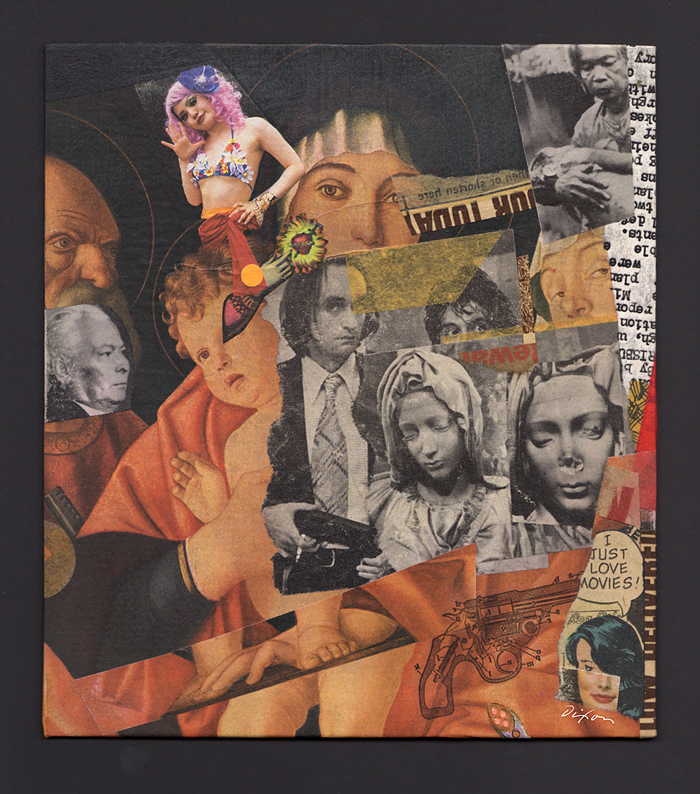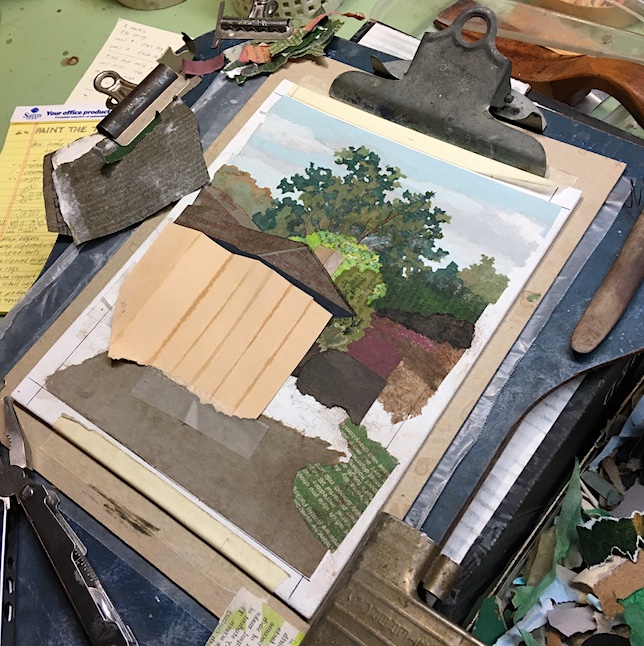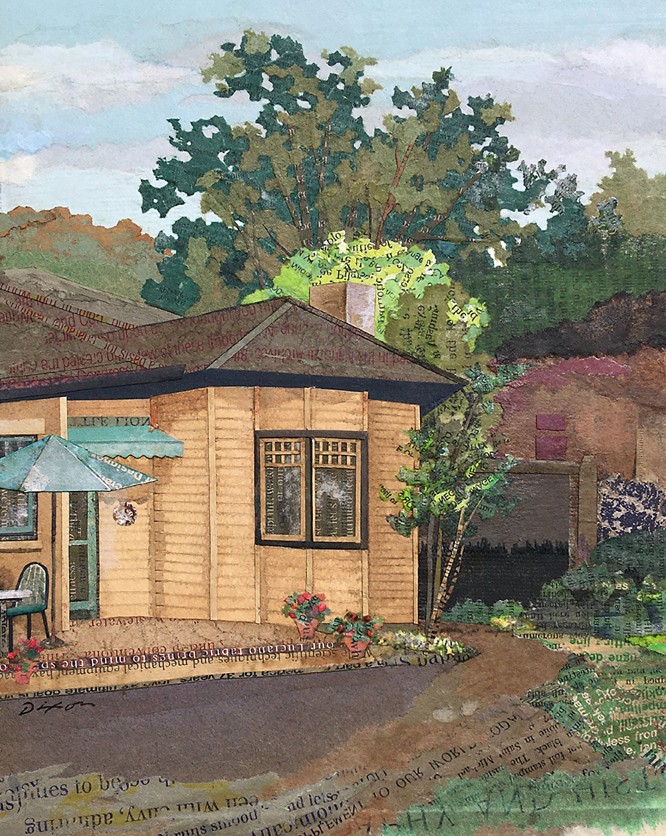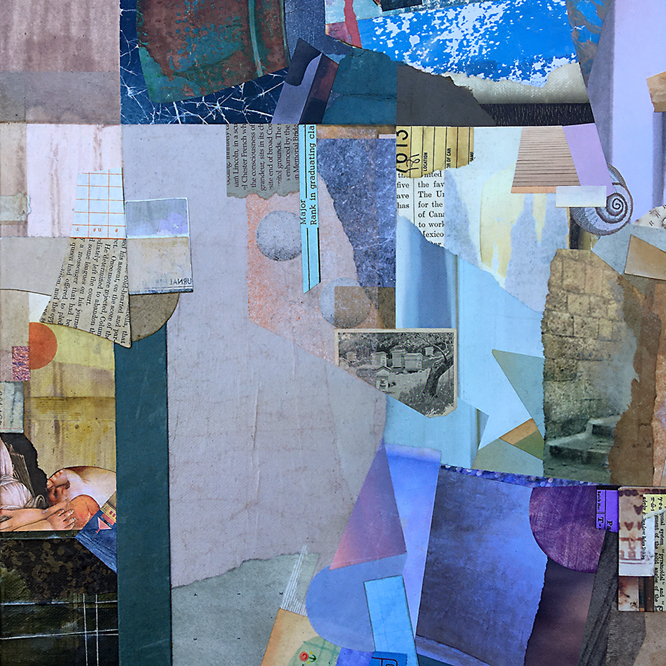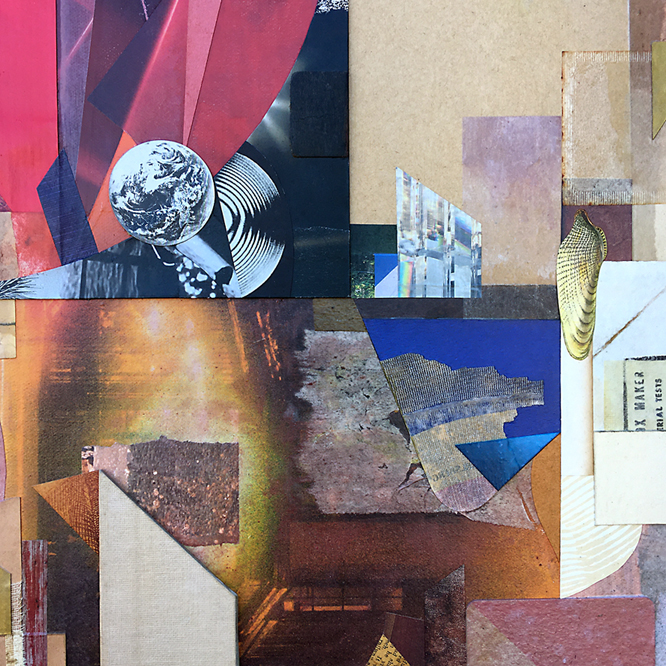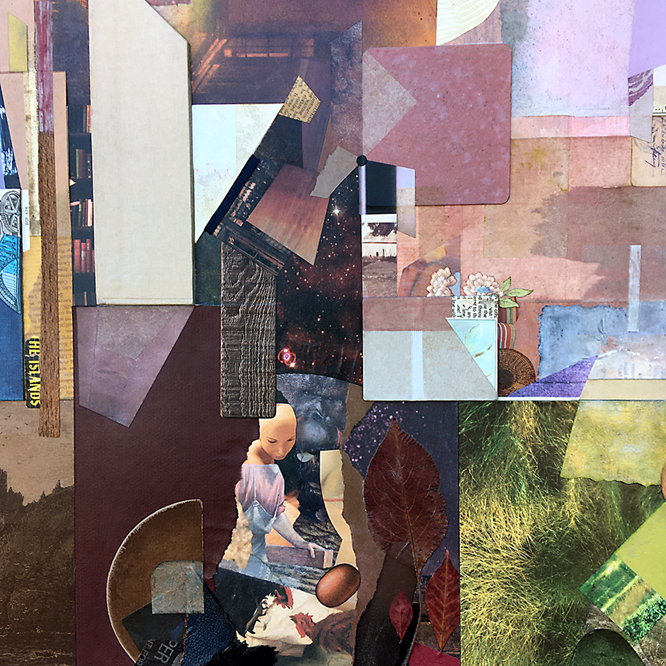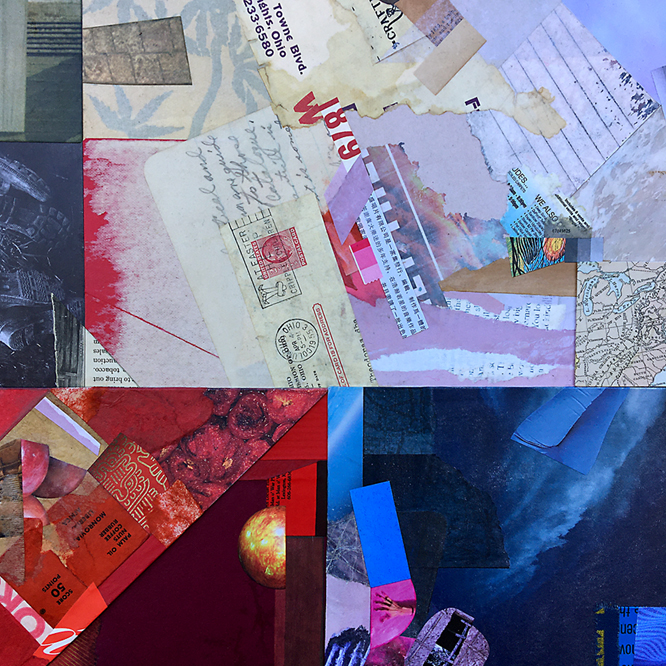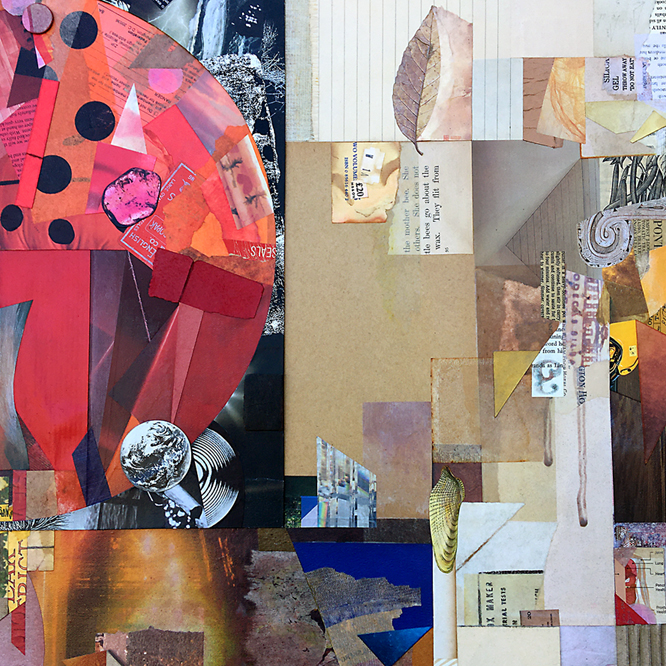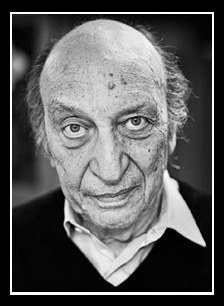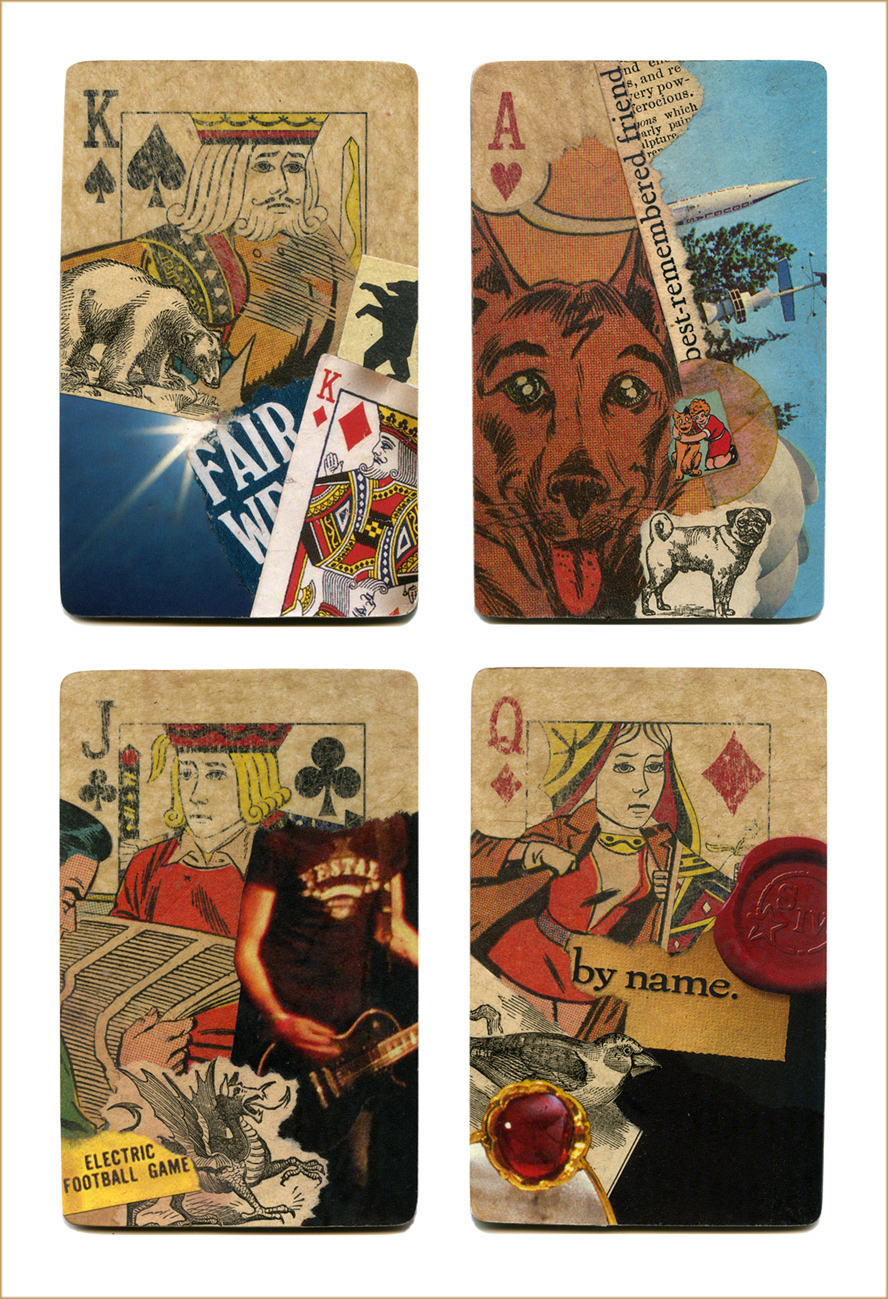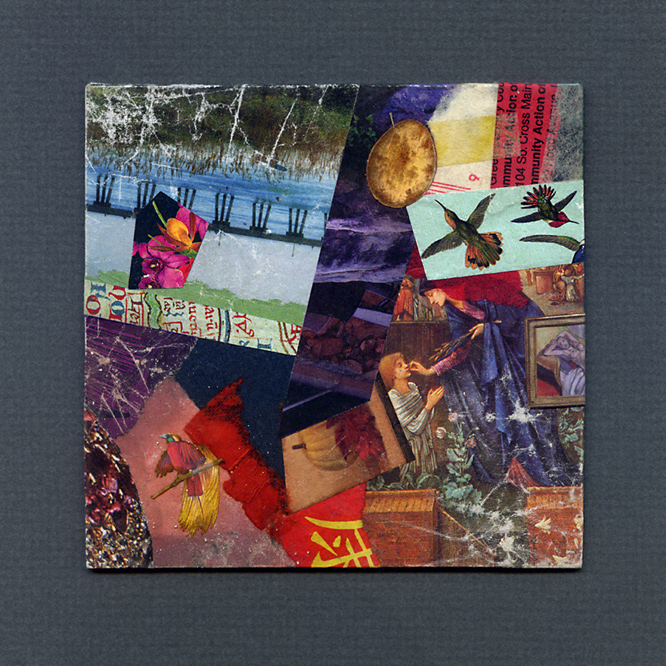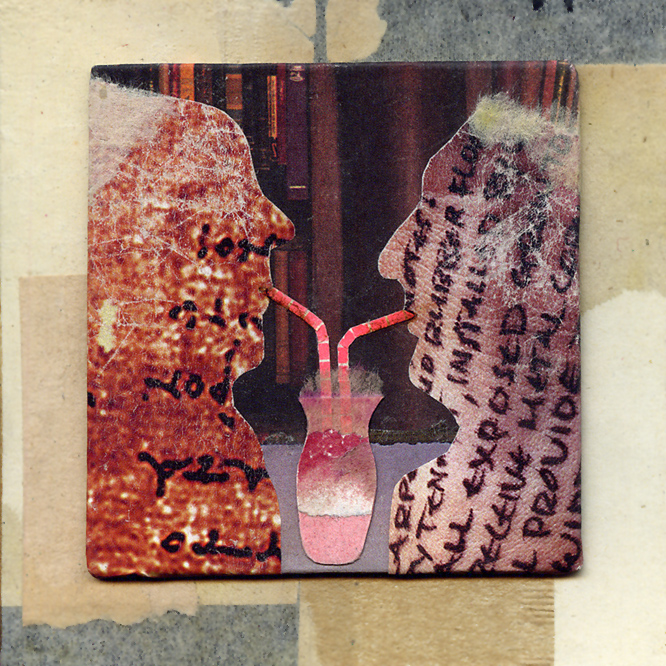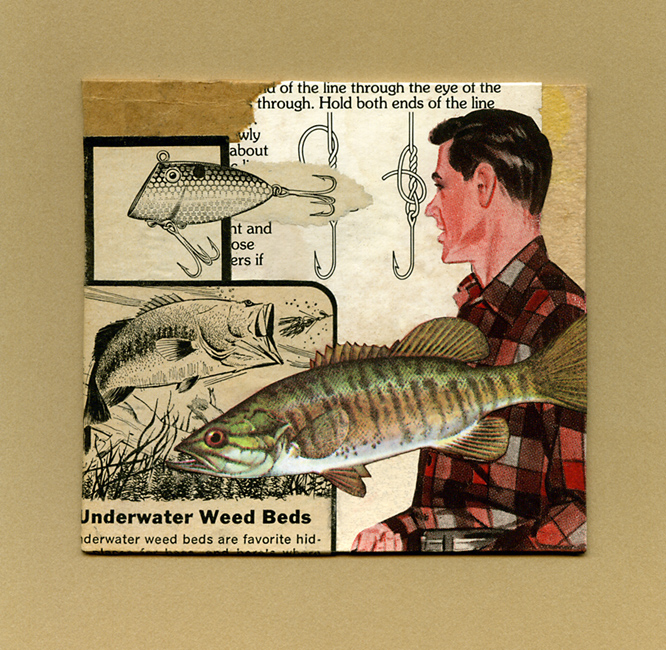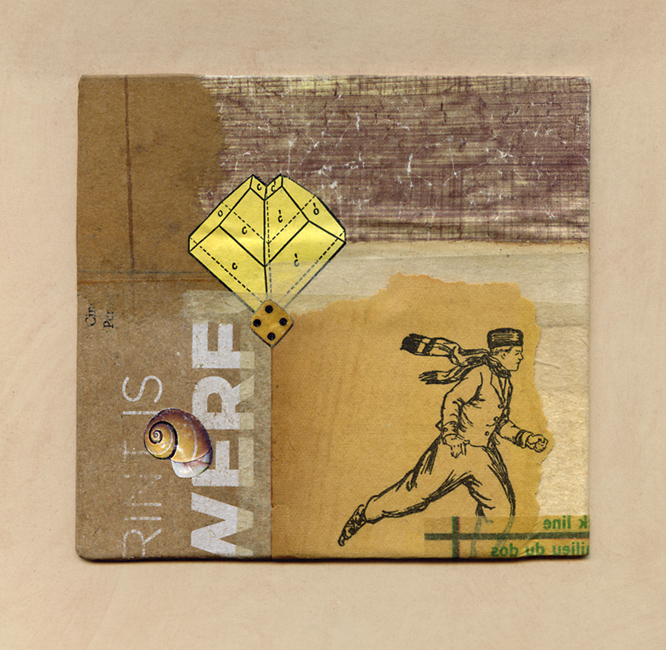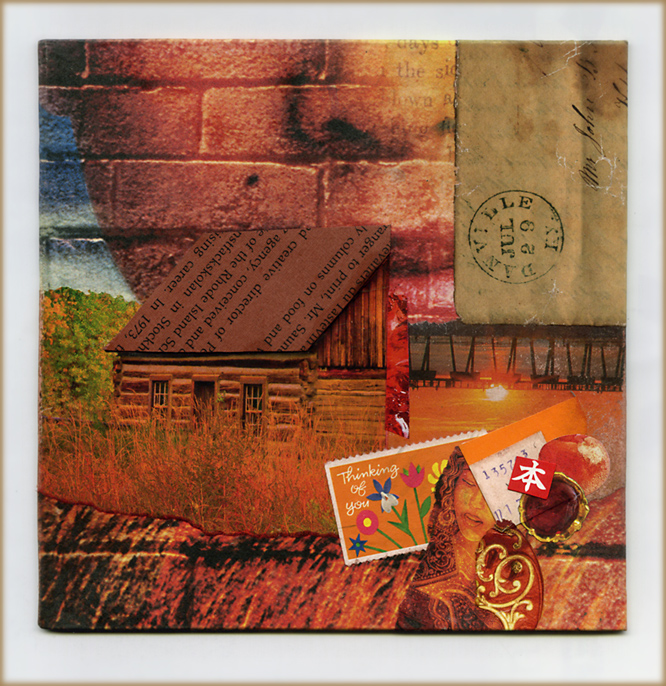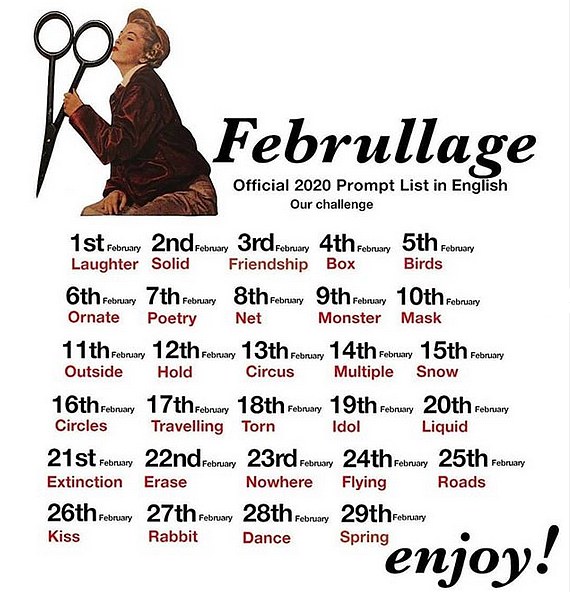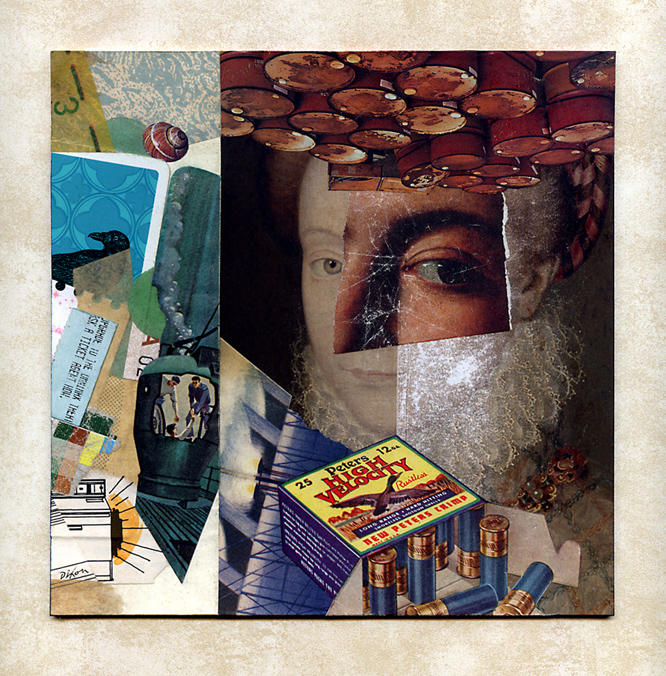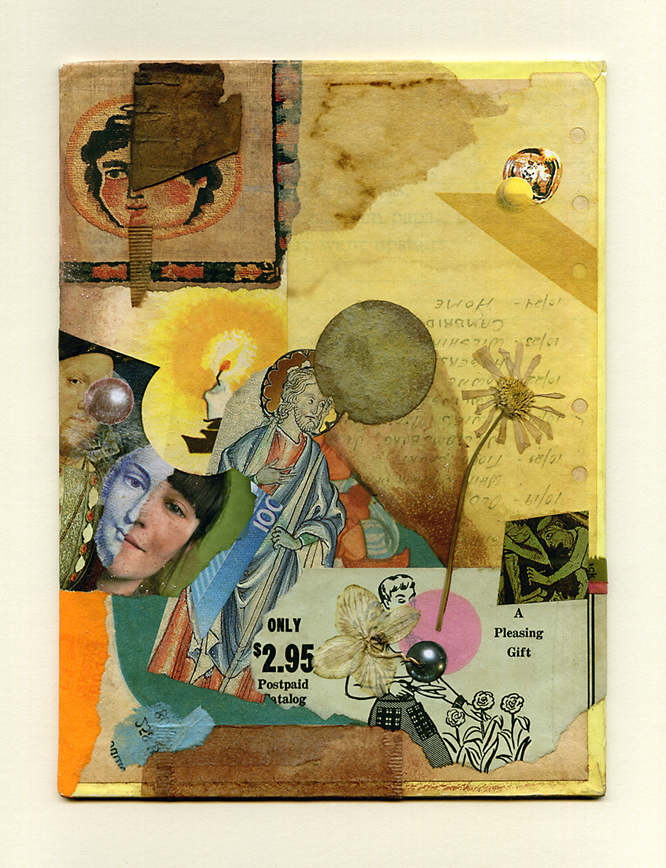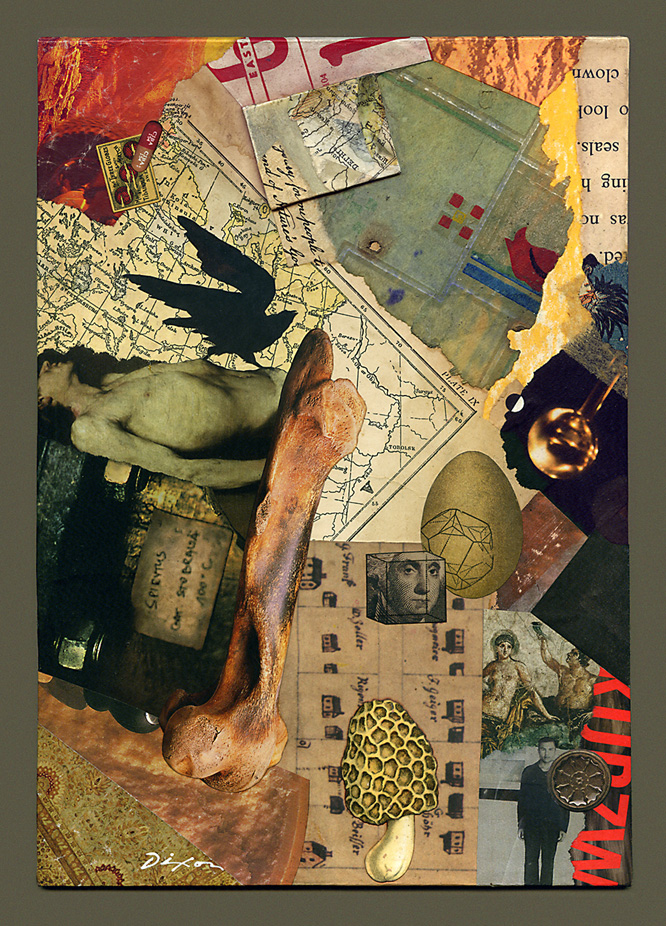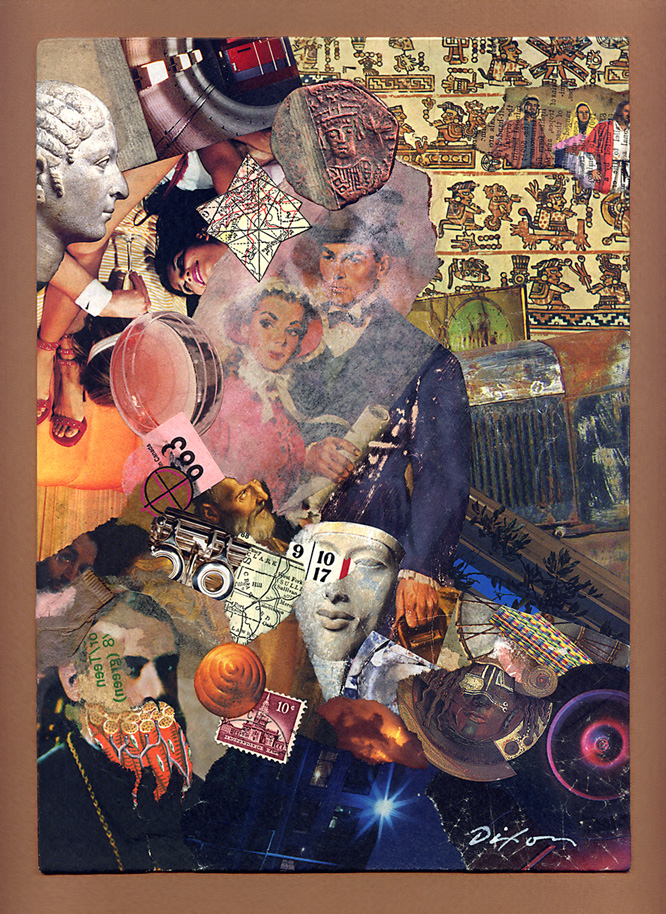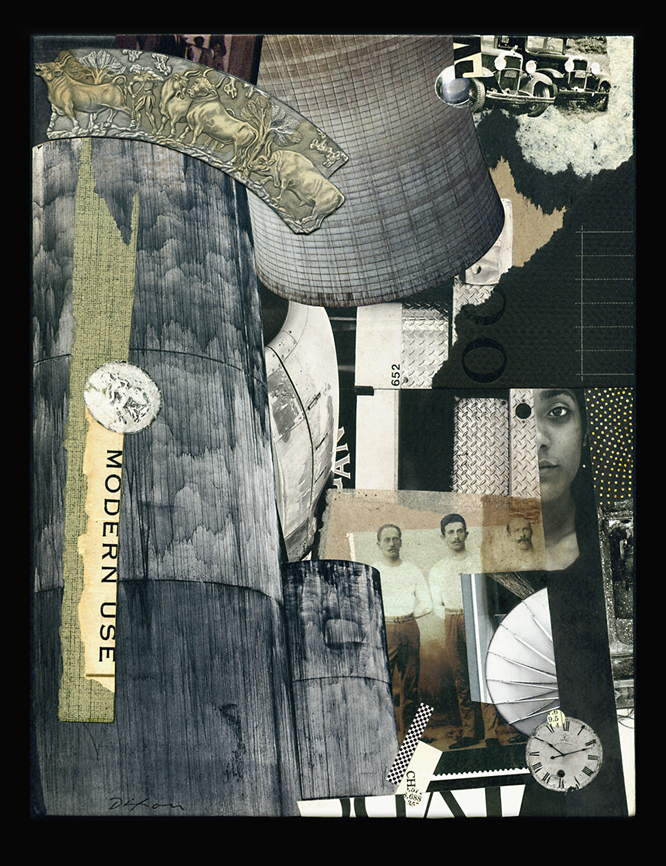“This idea of having something that isn’t quite in focus, something that isn’t quite understood, is interesting. I think details that are over-plentiful, details that are very dense, are lifelike. They exist in natural environments. Forests have a huge amount of details, because they are not built on a human level, so they are impossible to analyze at first glance, and I think we can only recreate what nature has done already, so I don’t think that the idea of simplifying something is a good thing.”
— Édouard Lock
August and September provided a stretch of exceptionally dry weather that was a disappointment for farmers in the Bluegrass, but valued by our intrepid PAACK of regional artists who work out of doors. I was able to create three more satisfying landscape miniatures.
Those who have followed this sequence of descriptions realize it hasn’t been that long since I met the challenge of doing collage en plein air. It has evolved as a gradient progression of discoveries. I’ve learned to think of my application of paper ingredients as a density of “brushstrokes” rather than the placement of simple design elements into a composition. 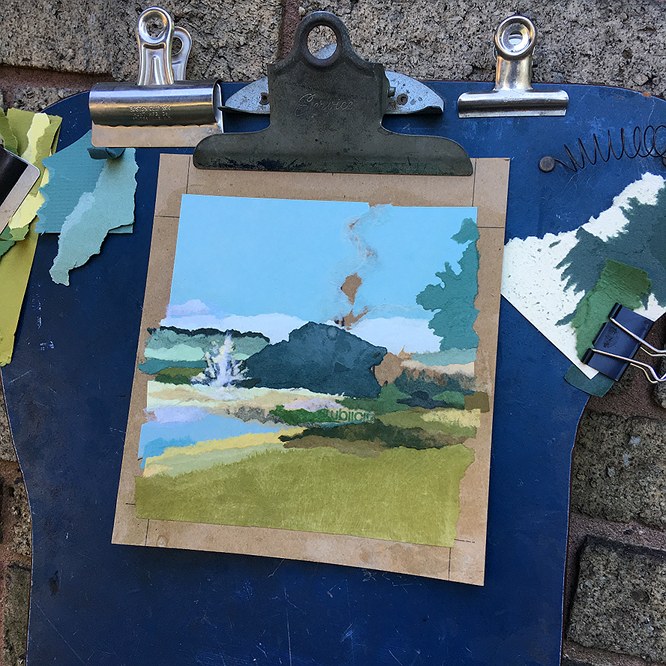 The two-year process has brought my artwork from a crafted illustration with cleanly pasted elements to a more layered, painterly effect. I’m tending to work wet-on-wet, using sandpaper and blades to score and feather edges. The thickness of papers is torn into “veneers” with areas that can achieve a blended translucency, and I’m more routinely taking advantage of recycled tea-bag “skins” to add warmth, texture, or visual softness. I continue to use three different liquid adhesives — wheat paste, white glue, and polymer gel — which offer contrasting levels of stickiness and drying time. I saturate the paper for manipulations not available with dry material and then flatten the surface with a cloth or burnisher, depending on a desired level of dimensionality.
The two-year process has brought my artwork from a crafted illustration with cleanly pasted elements to a more layered, painterly effect. I’m tending to work wet-on-wet, using sandpaper and blades to score and feather edges. The thickness of papers is torn into “veneers” with areas that can achieve a blended translucency, and I’m more routinely taking advantage of recycled tea-bag “skins” to add warmth, texture, or visual softness. I continue to use three different liquid adhesives — wheat paste, white glue, and polymer gel — which offer contrasting levels of stickiness and drying time. I saturate the paper for manipulations not available with dry material and then flatten the surface with a cloth or burnisher, depending on a desired level of dimensionality. 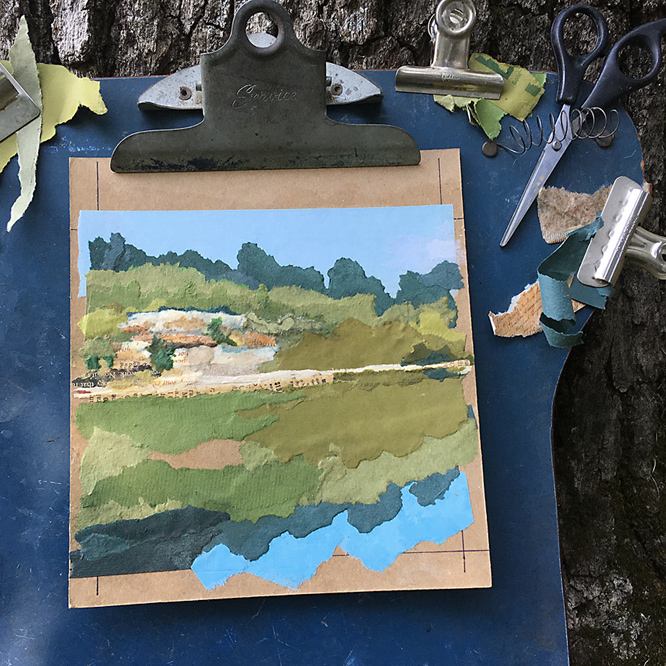 Bits of printed text continue to appear as part of my treatment, providing subtle highlights or more overt suggestions of pattern. This growing vocabulary of techniques has given me more confidence to tackle scenes that might have looked too difficult not so long ago. Attempting to “paint” a pond fountain or a rocky outcrop with only paper would have seemed more daunting when I first started to do this.
Bits of printed text continue to appear as part of my treatment, providing subtle highlights or more overt suggestions of pattern. This growing vocabulary of techniques has given me more confidence to tackle scenes that might have looked too difficult not so long ago. Attempting to “paint” a pond fountain or a rocky outcrop with only paper would have seemed more daunting when I first started to do this.
None of it would be possible without the generosity of those who host our outings. With a spirit of hospitality, the diversity of two farms and a wonderful view of the Dix River were each made available to us for a day. I rely on a square viewing card to select my composition and the all-important place to sit.

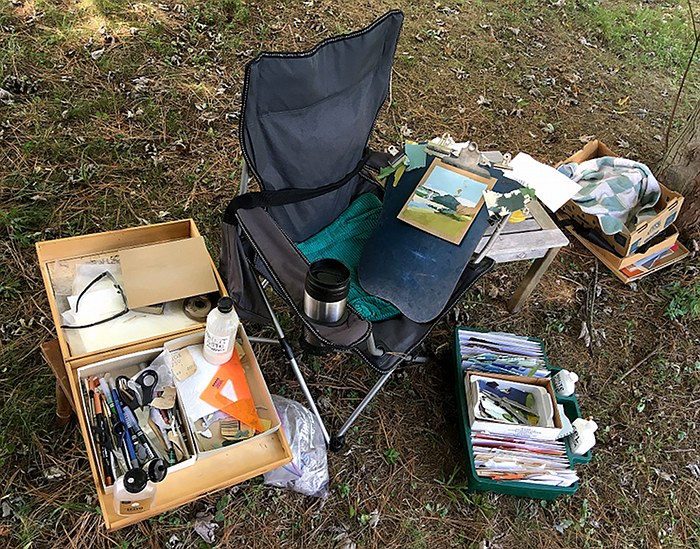
A point of self-criticism: my plein-air “collage rig” had gradually crept into the forbidden zone of overkill, so I made an effort to lighten my load before the next PAACK venture.
My goal has been a self-imposed limitation of studio follow-through, equal to or less than the amount of time I spend at the original site. I was able to meet that comfortably with August Afternoon, for a 50/50 allocation. When completing Fountain and Shadow, I had to suspend my detailed labor on the central tree. I’d prefer to invest less time indoors and was able to do that with Reflection on an Outcrop (a more desirable 60/40 ratio). Having been studio oriented in my art practice, I always need to guard against allowing the concluding phase to upstage a vital plein-air impression. I’ll rely on memory as much as I do an iPhone photo taken on location. It’s also important to remind myself that, as much as I enjoy my “maximalist” propensity, the objective should be a creative interpretation instead of a literal rendering. It is, after all, a collage artwork.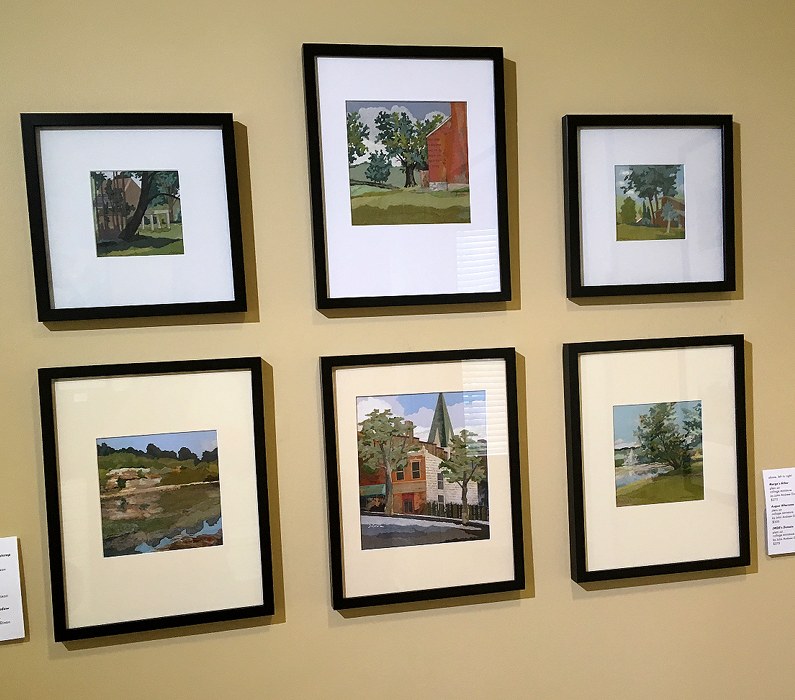
Collage Madness, my joint exhibition with Connie Beale, is currently on display here in Danville, Kentucky at the Mahan Gallery of Boyle County Public Library. It has provided the first ideal opportunity to showcase my approach to plein air collage and I’ll explain my process to visitors at a Gallery Talk on Saturday afternoon, October 19th. I’ve covered a number of bases as an artist and designer, but I have to say that this has been one of the most personally rewarding projects I’ve begun. Perhaps many of you can be there to hear my remarks.
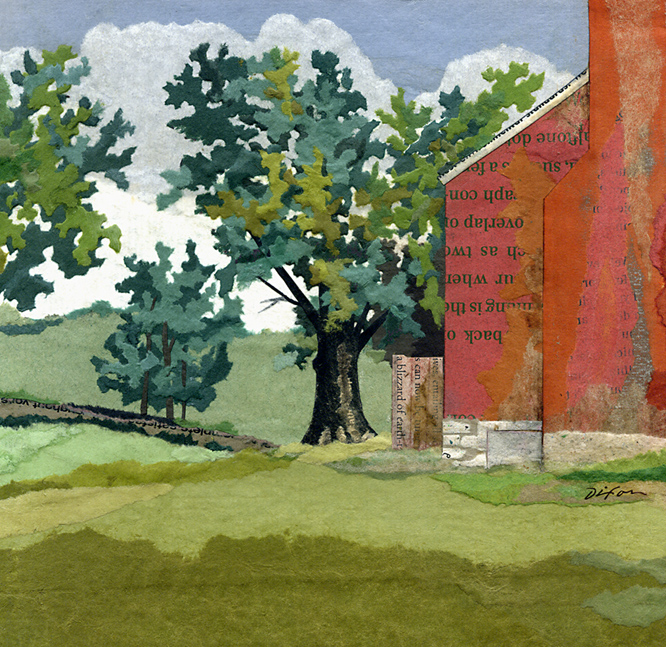
August Afternoon
plein air collage miniature by J A Dixon
7.25 x 7.125 inches
available for purchase
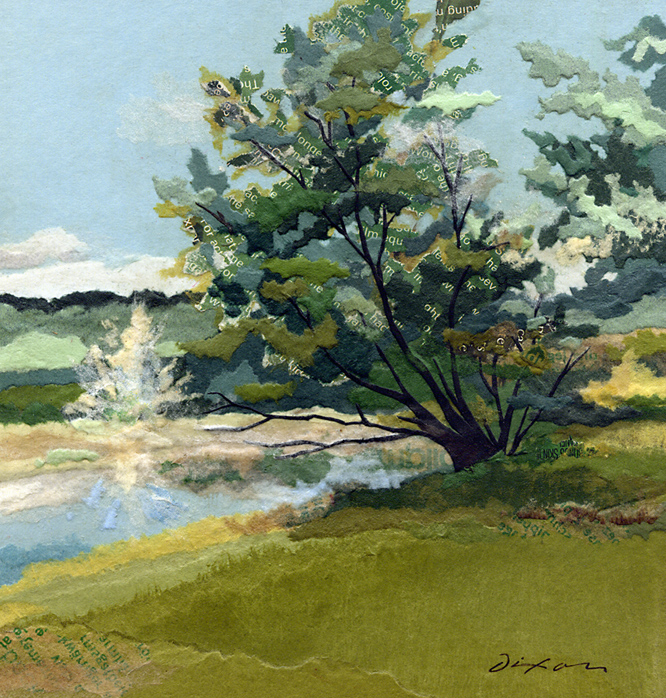
Fountain and Shadow
plein air collage miniature by J A Dixon
6 x 6.375 inches
• S O L D
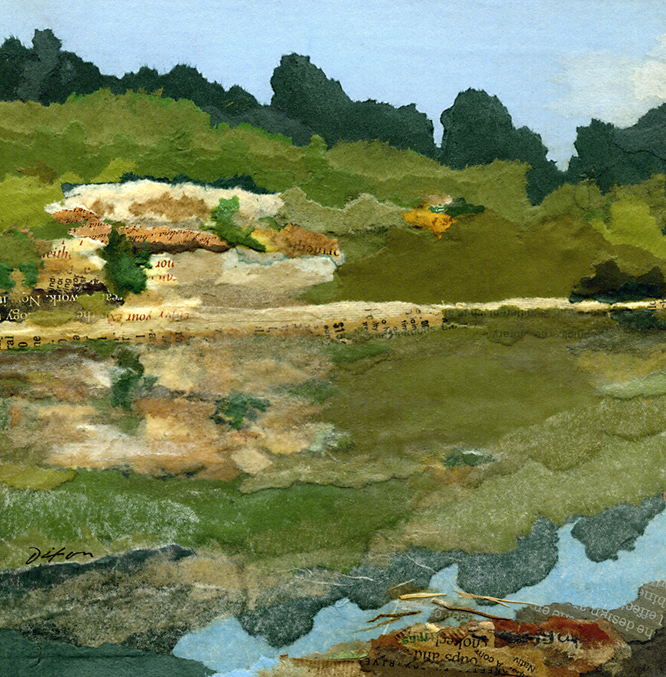
Reflection on an Outcrop
plein air collage miniature by J A Dixon
6.375 x 6.625 inches
• S O L D
